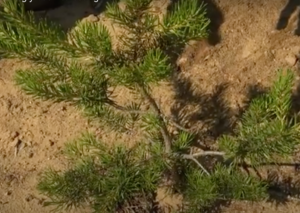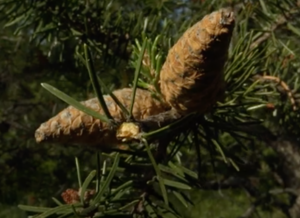 Not all trees and plants need to be aesthetically pleasing to serve an important purpose. In fact, many of the “ugly” or less visually attractive trees are vital for maintaining a healthy environment. While society often celebrates the beauty of flowering trees and lush, ornamental plants, it’s the less glamorous species that can have a more profound impact on the ecosystem. Some of these “ugly trees,” with their gnarled shapes, spindly branches, and non-descript foliage, are unsung heroes in the battle against climate change. Many of them are among the most efficient at producing oxygen and absorbing carbon dioxide, both of which are crucial for maintaining the planet’s balance. They may not win beauty contests, but they play an integral role in sustaining life.
Not all trees and plants need to be aesthetically pleasing to serve an important purpose. In fact, many of the “ugly” or less visually attractive trees are vital for maintaining a healthy environment. While society often celebrates the beauty of flowering trees and lush, ornamental plants, it’s the less glamorous species that can have a more profound impact on the ecosystem. Some of these “ugly trees,” with their gnarled shapes, spindly branches, and non-descript foliage, are unsung heroes in the battle against climate change. Many of them are among the most efficient at producing oxygen and absorbing carbon dioxide, both of which are crucial for maintaining the planet’s balance. They may not win beauty contests, but they play an integral role in sustaining life.
Large Beautiful Trees
Take, for example, the black walnut tree. While its large, dark leaves and rough, untidy bark may not be considered attractive in the traditional sense, the black walnut is an incredibly efficient oxygen producer. It’s also a powerhouse for absorbing carbon dioxide and improving soil quality. Its deep root system helps prevent soil erosion, and its dense canopy provides essential shade in hot climates, cooling the environment and improving air quality. The black walnut’s ability to produce oxygen, combined with its role in supporting biodiversity, makes it an invaluable tree for the environment.
Environmental Benefits
 Another tree ugly that serves a significant environmental purpose is the red maple. Red maples may not have the lush green foliage associated with traditional tree beauty, but they are incredibly hardy and thrive in a wide variety of conditions. Their rapid growth and high photosynthetic activity help to trap carbon dioxide and reduce the overall amount of greenhouse gases in the atmosphere. Red maples are also essential for supporting local wildlife, offering food and shelter for a range of animals, from birds to insects.
Another tree ugly that serves a significant environmental purpose is the red maple. Red maples may not have the lush green foliage associated with traditional tree beauty, but they are incredibly hardy and thrive in a wide variety of conditions. Their rapid growth and high photosynthetic activity help to trap carbon dioxide and reduce the overall amount of greenhouse gases in the atmosphere. Red maples are also essential for supporting local wildlife, offering food and shelter for a range of animals, from birds to insects.
Similarly, the willow tree, with its twisted branches and weeping habit, may not be a typical symbol of beauty, but it is crucial for improving the environment. Willows have a deep, extensive root system that prevents soil erosion and helps stabilize riverbanks. Their ability to grow quickly and absorb excess water makes them an excellent choice for areas prone to flooding. They also produce large amounts of oxygen, contributing to cleaner, fresher air, especially in wetland areas.
Evergreens & Oaks
 On the opposite end of the spectrum, evergreen trees such as the Douglas fir and pine trees, while often more stately, may also not win beauty contests. However, their role in the environment is irreplaceable. Evergreen trees are among the most efficient at absorbing carbon and providing oxygen throughout the year, unlike deciduous trees that only do so during their growing season. Pines, in particular, grow in harsh conditions where other trees may not survive, and their ability to filter pollutants from the air further enhances their environmental value.
On the opposite end of the spectrum, evergreen trees such as the Douglas fir and pine trees, while often more stately, may also not win beauty contests. However, their role in the environment is irreplaceable. Evergreen trees are among the most efficient at absorbing carbon and providing oxygen throughout the year, unlike deciduous trees that only do so during their growing season. Pines, in particular, grow in harsh conditions where other trees may not survive, and their ability to filter pollutants from the air further enhances their environmental value.
Oak trees—which might appear gnarly and untamed in their older age—are often considered the backbone of many ecosystems. They support a wide variety of wildlife and contribute significantly to biodiversity. Their large, expansive root systems improve soil structure, while their massive canopies help absorb significant amounts of carbon. Oaks, despite their often uneven, rugged appearance, are invaluable to the environment.
In conclusion, beauty is not always the most important characteristic when evaluating trees and plants for their environmental benefits. Even those that may not be considered conventionally attractive have crucial roles to play in maintaining a healthy planet. Many of these “ugly trees” are among the best at producing oxygen, sequestering carbon, and supporting diverse ecosystems, which ultimately benefits not only the environment but all of humanity. It’s essential to appreciate the full spectrum of plant life, recognizing that beauty comes in many forms, and that every tree—no matter its appearance—offers something vital to the earth.